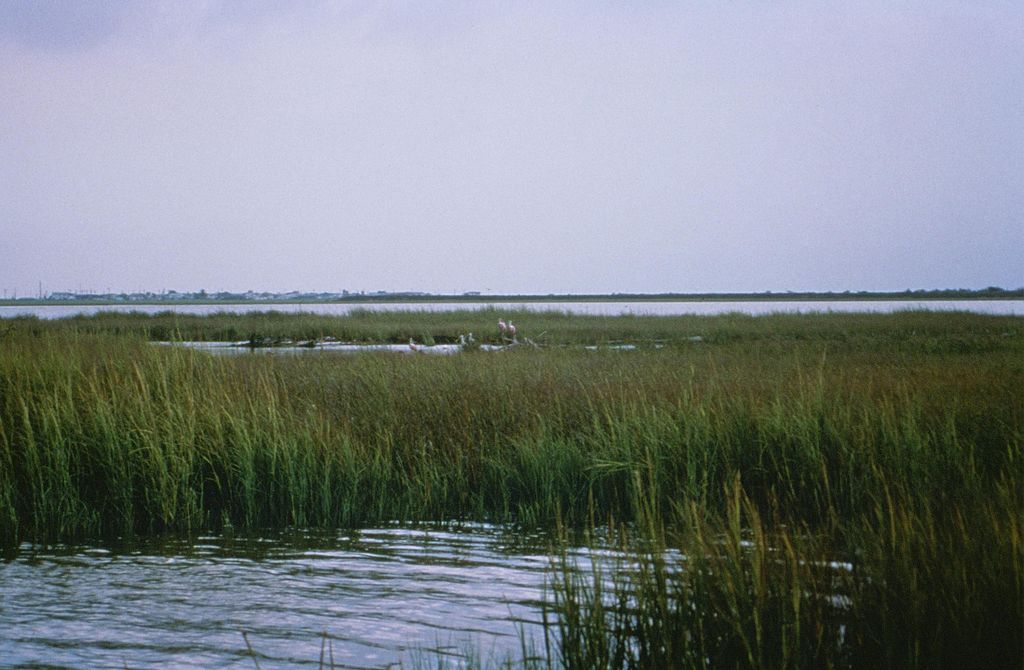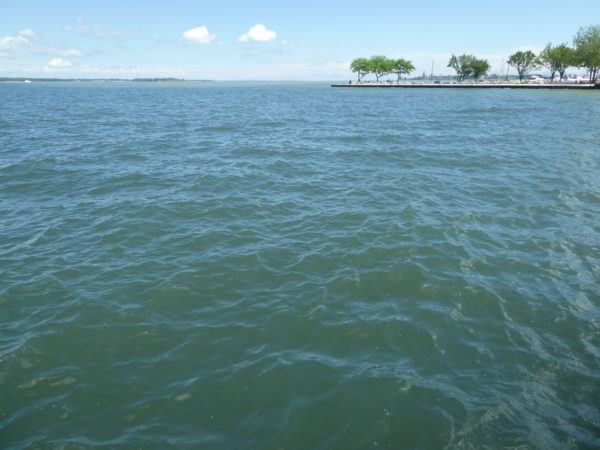
On May 25, the Supreme Court ruled 9 to 0, changing wetland protection in The Clean Water Act. The Sackett family, who took on the Environmental Protection Agency (EPA), were being fined $40,000 a day for building their Idaho property too close to an unnamed tributary. That tributary feeds into a creek, and that creek feeds into Priest Lake.
The question the Supreme Court was tasked with answering was, how far removed from Priest Lake should the EPA protect?
The Clean Water Act has protected the “waters of the U.S.” but what constitutes those waters? Priest Lake is considered navigable and permanent; thus, according to Justice Samuel Alito it is regarded as a “water of the U.S..” As for the wetlands that are further removed from the lake? They are no longer under this consideration if they do not directly touch a larger body of water.
The language around this is confusing, even scientists admit. The Great Lakes certainly qualify as “permanent” and “navigable waters,” so the marshes and swamps directly next to them are federally protected. However, the reality of this ruling is more complicated than it seems on the surface.
What does this mean for the Great Lakes?
On the surface, the Great Lakes are fine. Technically, they are permanent and navigable bodies of water, so the wetlands directly attached to them are safe. However, according to Northwestern Professor Aaron Packman, that doesn’t accurately abide by the rules of hydrology, as all water is connected in the water table, below ground. It can never be out of sight, out of mind. Meaning that looking at anything involving water, on just the surface level or based on state borders, is not an accurate way of actually looking at water.
“If you want to ensure the integrity of the Great Lakes, you clearly cannot rely on individual state rules,” said Packman. “It’s just like abortion or any other issue: if there’s not a governing law at the national level, that provides some uniform protection, say, for the Great Lakes, then you can have things all over the place locally.”
The Sackett family and their property are across the country in Idaho, about 1,800 miles from Lake Michigan. However, the Columbia River basin, which runs through Idaho and includes the Clark Fork and Snake rivers, eventually drains into the Missouri river. The Missouri river is a tributary of the Mississippi, meaning they are connected. The Mississippi eventually meets the Great Lakes, one way is through the Illinois Waterway. What happens there, eventually makes it way elsewhere, and here.
What are wetlands for?
These ecosystems are known as the kidneys of the landscape. They naturally filter pollution from getting to our larger bodies of water, by sequestering things like sediments or run-off from farms, because things get slowed down by the vegetation in these shallower and denser waters. According to Katie Fairchild, Great Lakes Coastal Wetland Ecologist at Michigan’s Department of Environment, Great Lakes, and Energy (EGLE), eventually this pollution can fall out of the water column or be absorbed by plants.
With the country facing threats of flooding daily, wetlands act as natural flood protection. According to Fairchild, the soil and plant life found in these ecosystems are porous, because their water levels always vacillate. This means the vegetation and soil can sponge up excess water during wetter seasons or years, and they can also survive when the water levels are much lower. The fluctuating nature of water levels in these more removed wetlands is another reason this Supreme Court ruling doesn’t quite follow the rules of hydrology. Water is not fixed, it moves, some years it’s higher than others, and in those years, it might be more directly connected to a larger body of water.
“We’ve seen in the last number of years, with extreme lows and extreme highs in Great Lakes water levels; those coastal wetlands serve to dampen some of the erosion, the erosive forces of the high water during those high water years,” said Fairchild.
Professor Aaron Packman is working to help track and restore manoomin, or wild rice, along the Great Lakes wetlands. This is thanks to a grant from the National Science Foundation that aims to bridge the gap between scientists and Native American Ojibwe culture. Packman explains how wild rice is important to the region, not just as a food source for humans and animals, but it’s also considered a keystone species, and that the changing habitat of wetlands is all part of its natural process.
“If you go to these areas in the spring, you have massive snow melt and there’s nothing growing, but you go at the end of the summer, you find these coastal bays that are completely full of vegetation, with a few water channels winding through them. So naturally, there’s only about three or four plant species that form those stands of vegetation, and manoomin is one,” said Packman.
He said that in terms of fish, all that vegetation growing up through the water is what the small fish hide in, live in, and are protected in. This is why we think of wetlands as nurseries. When those fish get bigger, like yellow perch, they go to wherever their adult habitat is out in the lake.
According to Anne Garwood, who is part of the Wetlands, Lakes, and Streams unit of Michigan’s EGLE, these particular ecosystems occur in this transitional area between the terrestrial environment and the aquatic environment. This is why it’s hard to quantify what is a wetland if it is only based on how much water immediately surrounds it, as they exist as a sort of liminal and changing resting space for many species.
“Most species at some point in their lives need to use the in-between area, and wetlands are that area, which is why they are highly productive,” said Garwood.
Individual state laws, of those directly bordering the lakes
Wisconsin
All Wisconsin wetlands are protected. The 2001 Wisconsin Act 6, protected isolated and non-federally protected wetlands. This was in response to the 2001 Supreme Court ruling, SWANCC v. the U.S. Army Corps of Engineers, which limited the federal protections of “isolated waters,” which included wetlands not visibly connected to a larger body of water.
Illinois
The state has lost 90 percent of its wetlands since 1818. Only wetlands on public property are protected, but wetlands on private property are not protected at the state level. Ninety-five percent of Illinois land is considered private property and are now at risk.
Indiana
Two recent bills, Senate Bill 389 and Senate Bill 414, have already weakened wetland protection in Indiana. Now, only 20 percent of wetlands in the state will be protected due to these new amendments, and according to the recent Supreme Court ruling.
Michigan
In 1979, the state passed the Geomare-Anderson Wetlands Protection Act, also known as Part 303. This provides extensive protections to wetlands that are connected to or 1,000 feet from the Great Lakes or Lake St. Clair; anything connected to or 500 feet from an inland lake, pond, river, or stream; any wetland that may be isolated but is more than 5 acres in size, or has been declared essential by the Michigan Department of Environmental, Great Lakes, and Energy (EGLE).
Ohio
Like Illinois, Ohio has lost 90 percent of its wetlands. Many scientists cite this for being a major cause for Lake Erie’s algal blooms, as wetlands act as natural filters. The removal of the Great Black Swamp (a wetland) being the most detrimental loss. According to Ohio law firm, Calfree, there are three different review levels for “isolated” wetlands permits. This could help in favor of curbing future wetland loss, as they are dependent on the size of impact and the quality of the wetlands, which will be determined from the Army Corps of Engineers.
Pennsylvania
According to the Chesapeake Bay Foundation, thousands of isolated wetlands along the bay are now at risk. Even with the 1937 Clean the Streams Law, they believe loopholes, waivers, and limited enforcement by state officials could leave wetlands in the state at risk.
This means, the wetlands around the state’s little part of Lake Erie are also at risk.
New York
According to Earth Justice, the state of New York currently has some of the strongest wetland protections in the country. One of these protections being the recent reforms to the New York State Freshwater Wetlands Act. This gave security to more than a million acres of freshwater wetlands, as well as tens of thousands of smaller wetlands.
Catch more news at Great Lakes Now:
What does the Supreme Court’s wetland ruling mean for Michigan?
Rising water makes Lake Michigan wetlands vulnerable to invaders
Featured image: Coastal wetlands (Photo courtesy of U.S. Fish and Wildlife Service)




